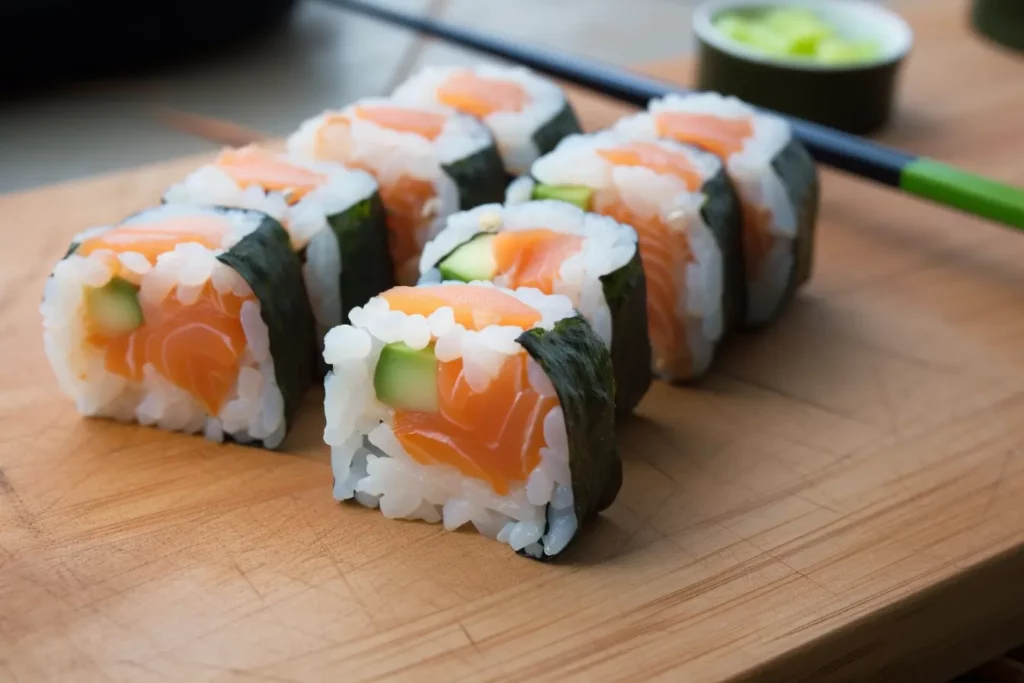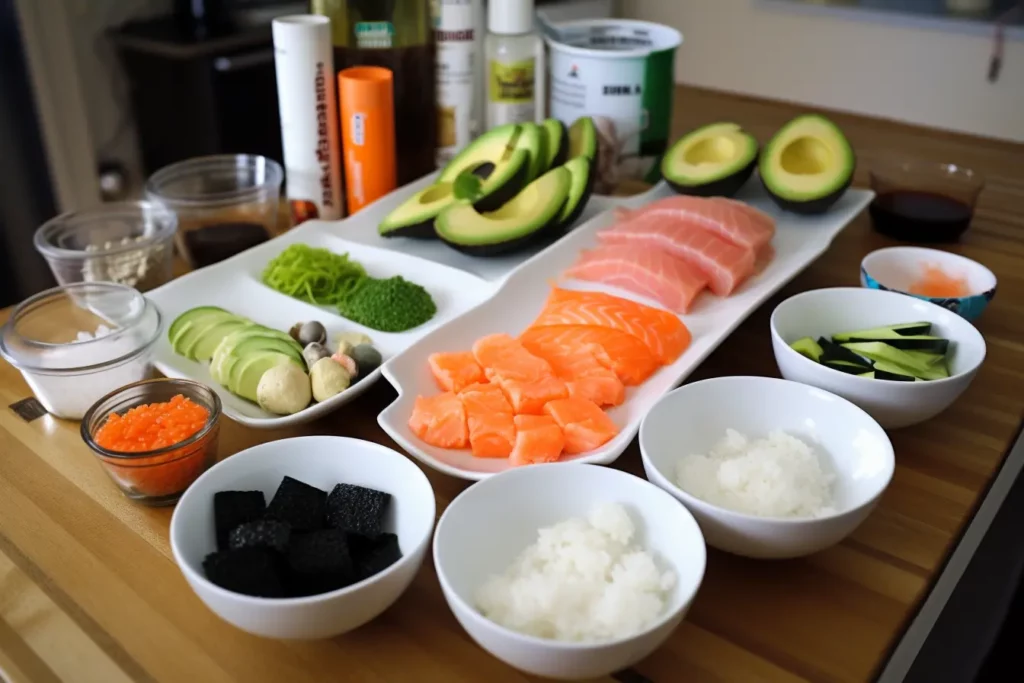In the vast and fascinating world of culinary arts, there are few elements that compare in beauty, precision and history to the perfect combination of Japanese knives and sushi. The art and science that goes into making each of these remarkable tools is reflected in the fine art of sushi cutting, with each element highlighting the subtle complexity of the other. From the flawless blade of the knife to the artful presentation of the sushi, the process of discovering both is a study in aesthetics, skill, and harmony.
The Art of Japanese Knives
Anyone who has ever enjoyed the dishes of Japanese chefs knows that the highest precision and care are involved in the preparation. An important factor in this is the tools they work with – especially the knives. Japanese knives are in a class of their own in terms of quality and durability. But what makes them so special? Here are some reasons why they are incomparable in the kitchen.
- Biodiversity: Japanese knives come in different types and sizes, all of which are tailored to specific tasks in the kitchen. From Santoku and Gyuto as utility knives to specialized knives such as Yanagiba and Deba for making sushi and sashimi. This allows for precise cutting for each specific recipe.
- Excellent workmanship: Japanese knife makers use centuries-old techniques from samurai sword making. The blades are forged from multiple layers of steel to make them extra sharp and durable. The so-called Damascus pattern also makes these knives look particularly attractive.
- High sharpness: Due to the special process of forging and hardening, Japanese knives can achieve an extremely high hardness. These knives therefore sound sharp for longer than others.
- Handmade: Many Japanese knives are handmade and therefore unique. Each knife goes through many steps from forging to hardening to grinding and polishing, all of which are performed by skilled craftsmen. As a result, the quality of each individual knife is extraordinarily high.
- Light weight: Weight also plays a major role. Japanese knives are often lighter than Western models. This makes them more comfortable to work with and allows for a more precise cut.
- Aesthetics: Not to be forgotten is the aesthetic component. Japanese culture places great emphasis on beauty and harmony. Accordingly, Japanese knives are designed not only functionally, but also aesthetically.
These are the reasons why Japanese knives are in a class of their own. There’s no question about it, they’re an investment. But for passionate home cooks or even professionals, they are worth it. Because when you work with them, you feel the difference. It’s these little details that make the difference and make cooking a special experience. From a Japanese knife, you never want to go back to a standard kitchen knife.

The aesthetics of sushi
The enjoyment of sushi is not limited to the taste, but also includes the visual component. Aesthetics play a crucial role in creating an attractive and inviting dish that sends our palate and senses on a culinary journey. You could say that sushi is a sophisticated synthesis of art and cuisine that has found a firm place in today’s way of life.
The first glance at the sushi provides a crucial first impression. Colourful fish fillets, carefully cut and presented on a precisely rolled bed of rice, make the hearts of sushi lovers beat faster. Like the stuff in our wardrobes, sushi speaks to us without words, telling stories of fresh catch, careful preparation and respect for tradition.
However, aesthetic presentation is not only important for the visual aspect. The way sushi is presented can also affect the taste. The color harmony of the different ingredients and the visual balance on the plate are signal generators of the quality of the ingredients and the skills of the sushi chef.
The fascination with sushi is also expressed in the multifaceted flair of sushi restaurants. The elegantly minimalist interior, the lighting and especially the high-quality porcelain tableware on which the sushi are served are a reflection of the philosophy: quality, beauty and simplicity.
Not to be forgotten is the perception of sushi in the social media channels. The stylings of sushi in photo shoots are a prime example of how aesthetics and lifestyle influence each other. From the choice of table decorations to the sushi accessories, every detail is carefully chosen to create a visually appealing photo that emphasizes this special way of enjoying.
Overall, it can be said that the aesthetics of sushi increase its importance and appeal in a complex way. Therefore, the preservation of this tradition is not only a matter of taste, but also a question of aesthetics. After all, a meal that looks and tastes good is the ultimate gastronomic experience.

The combination of knife and sushi
First, let’s understand what makes Japanese knives and sushi special. Japanese knives, handmade and endowed with exceptional sharpness and durability, are ideal tools for fine culinary techniques. Their lightweight construction and unique aesthetics create a connecting bridge to sushi, which is characterized by its diversity, colorful ensemble and unique taste.
The key to good sushi is mastery of technique and care in presentation. It is art and craft in one. Sushi presentation is not only a visual stimulus, but also an expression of appreciation for fresh ingredients and traditional craftsmanship. This is why Japanese knives are so important: they allow precise cuts that contribute to the aesthetic representation of the sushi.
Presented on an immaculate plate, each piece of sushi reflects the personality and artistry of the sushi master. Not only is it a culinary delight, but it’s also a visual experience that stimulates the taste buds before you’ve even taken a bite. Therefore, the aesthetic presentation has a significant impact on the taste of sushi as it stimulates the senses and creates a culinary experience.
Another aspect that brings sushi and Japanese knives together is integration into social media culture. Images of artfully prepared sushi plates flood Instagram and Pinterest, perfectly presented along with the chic Japanese knives. Sushi and Japanese knife photographs are a must-have for any foodie these days, contributing to a boom in sushi restaurants that offer an atmosphere as refined as their food.
The quality and precision of Japanese knives and the attentive aesthetics of sushi reflect the highly prized lifestyle that can only be achieved by combining outstanding quality cutlery with food that requires both culinary skills and aesthetic appeal. This celebrated aspect of Japanese cuisine, coupled with the fluid trend of food photography and social media sharing, makes Japanese knives and sushi a truly perfect combination. A lifestyle that strives for the best and values aesthetics and quality has never been so tasty and attractive.

The role of culture and tradition
Japanese knives are more than just kitchen tools. They represent the tradition and culture of Japan and exert an important influence on the art of knife making in the country. The unique features of these knives, such as artisanal manufacturing, sharp blade, and durability, reflect the precision and care that is also required in the preparation of sushi.
In Japan, sushi is more than just a dish. It is a form of art that reflects the skill and personality of the sushi master. Precise cuts that can only be achieved with Japanese knives contribute to an aesthetic presentation of the sushi that is visually appealing and appeals to the senses.
An essential aspect of this presentation is that it enhances the taste and sensory experience of sushi. It is an integration of aesthetics and quality that is highly valued in social media culture. The boom in sushi restaurants, which offer a refined atmosphere and aesthetic appeal, demonstrates the growing popularity of this art form.
The marriage of Japanese knives and sushi reflects a lifestyle that combines quality utensils with culinary artistry and aesthetic appeal. It is a perfect combination that appeals to those who value aesthetics and quality in their lifestyle. It represents a form of art that is expressed both on the palette and on the canvas of the table.
It is the sushi master who conveys his story, identity and passion in every bite. The Japanese knives are his most faithful allies, tools from a world that finds expression in the urgency of time and in the pursuit of perfection. They are the stuff of which dreams are made, for all those who fall in love with the art of aesthetics and the art of taste.
With the right combination of artistry, quality and cultural awareness, the experience of sushi preparation and presentation can become a real feast for the senses. And that’s what makes the difference: it’s not just what’s on the plate, it’s what’s happening around the plate that stimulates our imagination and whets our appetite. A journey into another world, to the land of the rising sun, where tradition and modernity merge harmoniously.
That’s why Japanese knives and sushi aren’t just food or tools. They are symbols of a lifestyle that values aesthetics, quality and pleasure. A lifestyle that looks at the world through the eyes of an artist and that knows how to find beauty in everyday things. Because in the end, it’s the art of living that counts. And in this sense, Japanese knives and sushi are real masterpieces.

A profound appreciation of Japanese knives and sushi art must acknowledge the irreplaceability of Japanese tradition and culture. The craftsmanship that can be seen in every Japanese knife and the subtle tastes that can be tasted in every sushi bite are expressions of a deeper meaning that goes far beyond immediate enjoyment. Every knife, every sushi bite is a tender window into the Japanese soul, an expression of the perseverance, ingenuity and beauty that have shaped Japanese culture for centuries. In the perfect symbiosis of these two elements, we find a deep expression of the human ability to create exquisite beauty and joy through our hands and mind.


